The Best Trees for a Utah Landscape
BY JUDITH GALLOVA | JUNE 6TH, 2023 | LAWN CARE, UTAHWhether you want a bit of shade to protect you from Utah’s scorching sun or you want to provide food and habitat for local wildlife, there are many reasons to plant a tree. But with Utah’s unpredictable climate, which likes to fluctuate between hot summers and freezing winters, it’s wise to know the best trees for your Utah landscape.
In this article:
- 10 Best Trees in Local Landscapes
- What Makes a Tree Thrive in Utah
- FAQ About the Best Trees in Utah
- How You Can Make Tree Care Easier
10 Best Trees in Local Landscapes
1. Apple Tree (Malus Domestica)
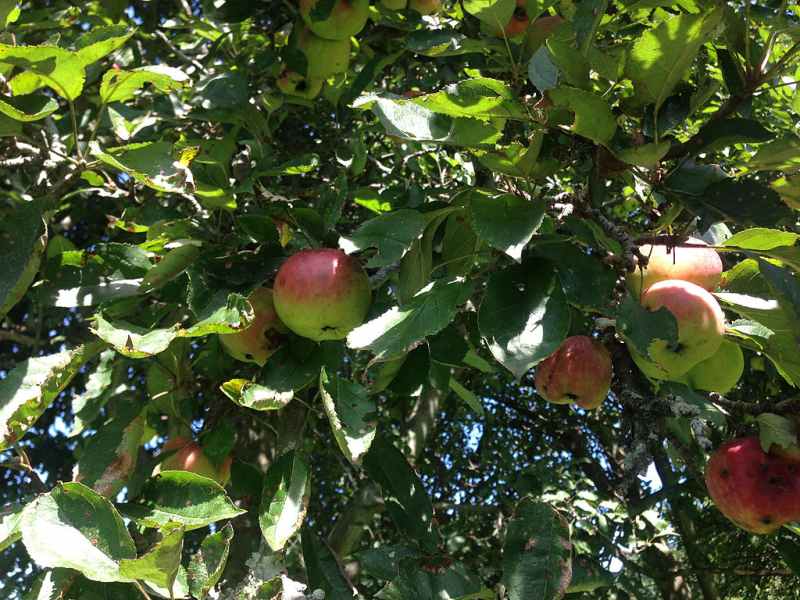
Photo Credit: Famartin / Wikimedia Commons / CC BY-SA 4.0
If you want a tree that looks great and produces delicious, nourishing snacks, why not plant an apple tree? There are various apple tree cultivars out there, and most grow better when another variety is planted nearby; so if you feel up to it, plant a couple. Standard apple trees may live for more than 50 years.
Take note that they’re also likely to attract birds and a variety of animals to your yard to snack, so consider humane ways to keep them off your apples.
Apple trees are versatile, don’t need as much care as other fruit trees, and usually grow well in Utah. So if you want to enjoy fresh, organic apples straight from your backyard, planting an apple tree may be a great idea.
The tree doesn’t have serious hazards, but apples’ stems, leaves, and seeds shouldn’t be eaten, as they’re toxic.
USDA Hardiness Zones: 3 to 9
Growing conditions: Grows well in well-drained, moist soil, but occasional dryness is fine; its soil texture should be clay, loam, or sand
Sunlight: Either full sun or a little shade, but at least 8 hours of sun per day
Mature size: 15 to 30 feet
Leaf retention: Deciduous
Flowering: Yes
Potential hazards: Toxic stems, leaves, and seeds
2. Blue Spruce (Picea Punges)
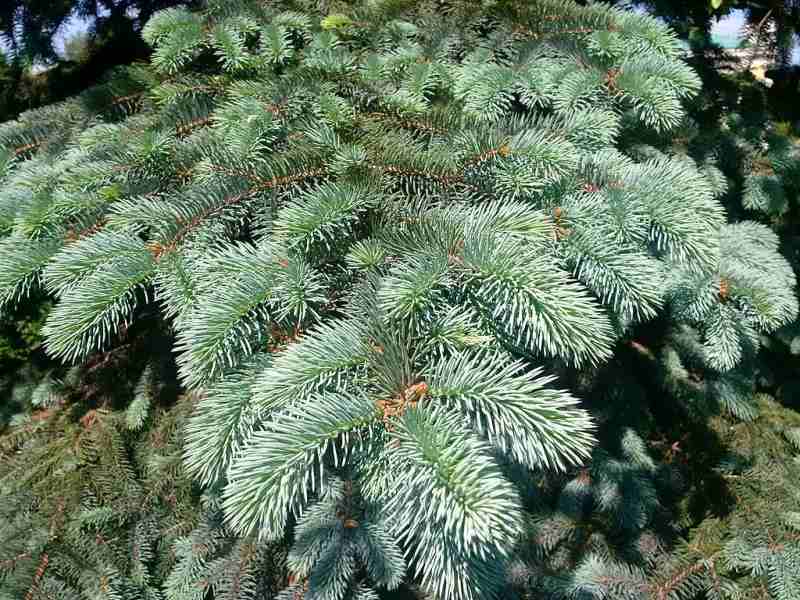
Photo Credit: Qirille / Wikimedia Commons / CC BY-SA 4.0
Blue spruce is a stunning, coniferous evergreen tree that may live for over 600 years. Though it’s also commonly called Colorado blue spruce, the tree is also native to the Beehive State; in fact, it’s Utah’s state tree. Because it’s a native, it’s well accustomed to Utah’s climate, easy to care for, and beneficial for wildlife. As one of the most popular evergreens, it will add a touch of beauty and elegance to your landscape.
USDA Hardiness Zones: 2 to 7
Growing conditions: Needs normal moisture, but tolerates floods and drought to an extent; adaptable; grows in acidic, loamy, moist, rich, sandy, well-drained and clay soils.
Sunlight: Should get full sun with at least 6 hours of sunlight per day
Mature size: 50 to 75 feet
Leaf retention: Evergreen
Flowering?: No
Potential hazards: None known, but caution is always advised
3. Bur Oak (Quercus Macrocarpa)
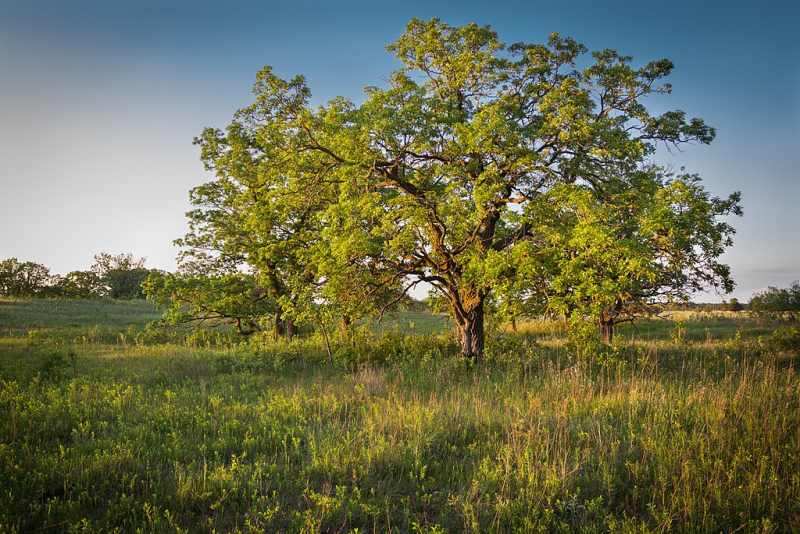
Photo Credit: Justin Meissen from St Paul, United States / Wikimedia Commons / CC BY-SA 2.0
Bur oak provides a great deal of shade with its crown, which often becomes wider than the tree’s height. It tolerates a variety of moisture and soil conditions but thrives in full sun. With a lifespan of over 300 years, bur oak may adorn your yard for generations. It’s also great for local wildlife such as butterflies, moths, beetles, treehoppers, and more.
Take note that all parts of the tree, including acorns, are toxic for you and your pets. However, the acorns are safe to eat for some birds and other wildlife, so you can provide them with food by planting the tree.
USDA Hardiness Zones: 3 to 8
Growing conditions: Needs moderate moisture but tolerates drought to an extent; grows in acidic, alkaline, loamy, sandy, well-drained, and clay soils.
Sunlight: Prefers full sun with at least 6 hours of direct sunlight daily
Mature size: 50 to 80 feet
Leaf retention: Deciduous
Flowering: No
Potential hazards: Toxic
4. Hot Wings Maple (Acer Tataricum)
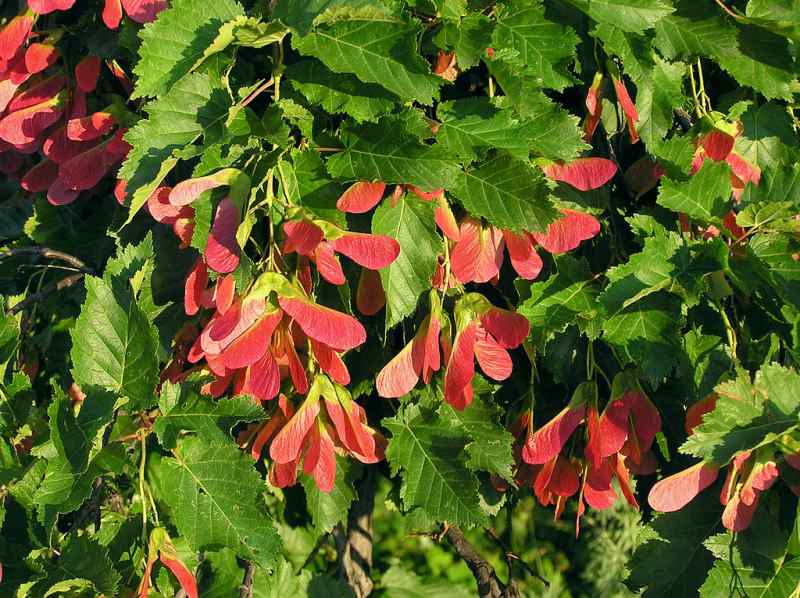
Photo Credit: Le.Loup.Gris / Wikimedia Commons / CC BY-SA 3.0
Hot wings maple, also known as Tatarian maple, is a showy tree that will make a fun addition to your Utah yard. Hot wing maple’s fragrant spring blossoms are followed by double samaras (wing trees) that fall from the tree, oftentimes called “spinners” or “helicopters.”
Although no hot wings actually grow on this tree, it will brighten your yard with its vibrant red foliage and provide some shade during summer barbecues. The tree’s size makes it perfect for smaller landscapes. It may live for over 70 years.
Though the tree poses no known hazards, be sure not to confuse your hot wings maple for a red maple or another toxic tree.
USDA Hardiness Zones: 3 to 8
Growing conditions: Tolerates various soil conditions and drought
Sunlight: Can grow in either full or partial sun
Mature size: 15 to 20 feet
Leaf retention: Deciduous
Flowering: Yes
Potential hazards: None known, but practice caution; be sure not to confuse your hot wings maple for red maple or another toxic tree
5. Japanese Cherry Blossom Tree (Prunus Serrulata)
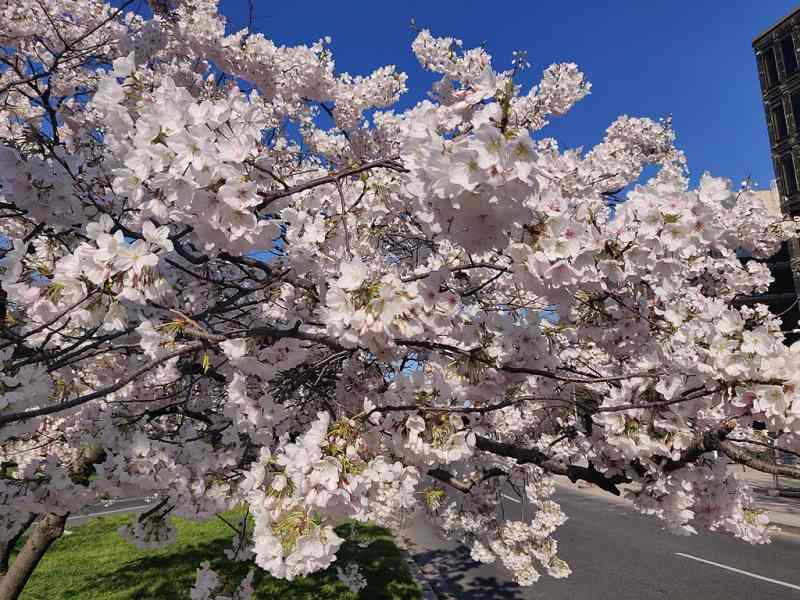
Photo Credit: Kurt Kaiser / Wikimedia Commons / CC0
Japanese cherry blossom tree, also known as Kanzan tree, features stunning double pink blossoms that bloom in the spring. They also display stunning fall foliage. The tree is shaped like a vase, and once it matures, its crown is often wider than the tree is high. Though it sometimes grows quite tall, it can also be planted as a bonsai tree.
Although Japanese cherry blossom tree doesn’t tolerate drought as well as some other trees, it can still handle mildly dry conditions. However, if you want the tree to thrive, you should keep its soil moist. This beautiful tree usually lives for between 15 and 25 years, but its numerous benefits make it well worth planting in your yard.
Take note that the tree doesn’t bear fruits, and its leaves, stems, and seeds are toxic.
USDA Hardiness Zones: 5 to 8
Growing conditions: Prefers moist conditions but tolerates dry weather to an extent; grows in acidic, alkaline, loamy, sandy, well-drained, wet and clay soils.
Sunlight: Should grow in full sun, with at least 6 hours of sunlight per day
Mature size: 30 to 40 feet
Leaf retention: Deciduous
Flowering: Yes
Potential hazards: Toxic
6. Northern Red Oak (Quercus Rubra)
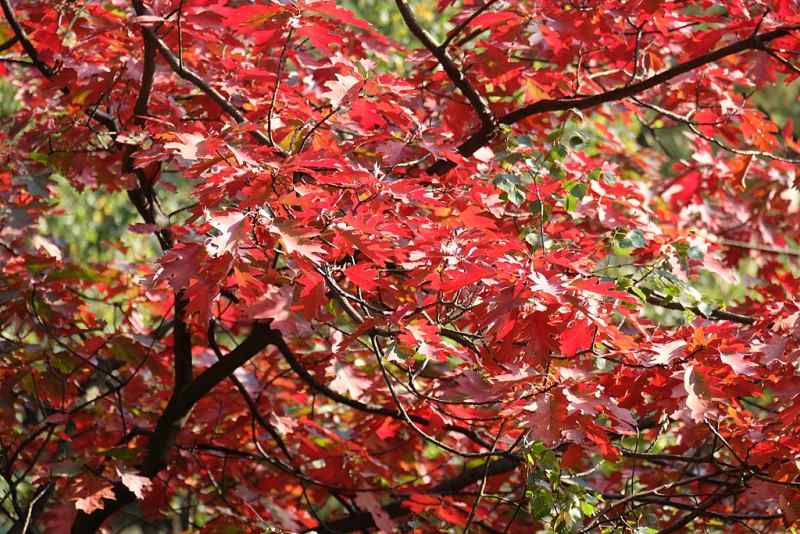
Photo Credit: Katrin Schneider, korina.info – CC-BY-SA-4.0 / Wikimedia Commons / CC BY-SA 4.0
For a pop of color during the fall months, consider planting the Northern red oak. This beautiful tree grows a dense crown, perfect for providing shade and improving your home’s curb appeal. It usually lives up to 300 years, although some northern red oaks have lived up to as many as 500 years.
It tolerates a variety of conditions, such as compacted soil, pollution, and drought, but prefers moist soil and lots of sunlight. While acorns are toxic for some animals, birds and rodents like to feast on them.
USDA Hardiness Zones: 3 to 8
Growing conditions: Prefers moisture, but can handle some drought; grows in acidic, loamy, moist, sandy, well-drained and clay soils.
Sunlight: should grow in full sun, with at least 6 hours of sunlight per day
Mature size: 60 to 75 feet
Leaf retention: Deciduous
Flowering: No
Potential hazards: Toxic
7. Peach Tree (Prunus Persica)
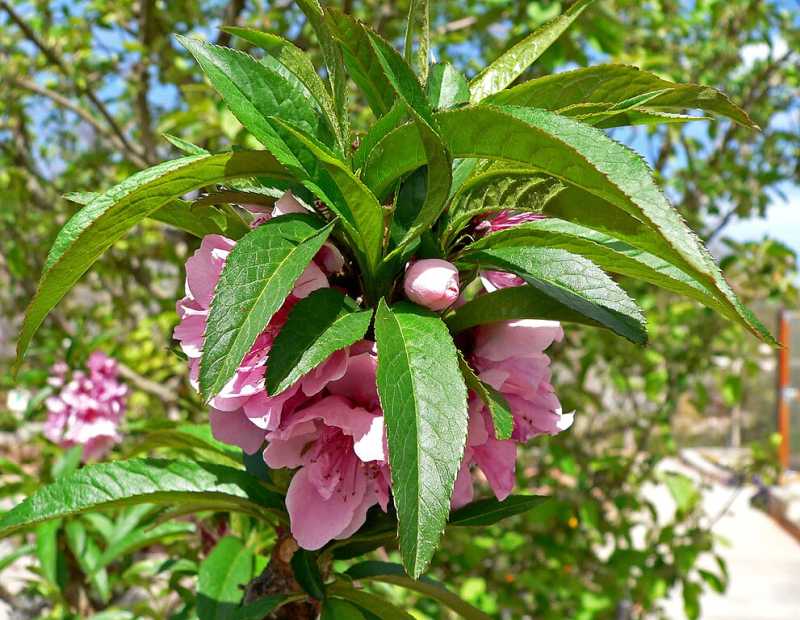
Photo Credit: Stan Shebs / Wikimedia Commons / CC BY-SA 3.0
If you want a tree that bears juicy, delicious fruit, another option is the peach tree. The peach tree thrives in Utah’s hot days and cold nights during the growing season, looks beautiful year-round, and has many available cultivars. It also attracts butterflies, birds, and even squirrels and raccoons. If you don’t want your peaches to be snacked on that much, you can consider a humane way to protect your peach tree.
Peach and nectarine trees usually live about 12 years. To keep your peach tree healthy and bearing delicious fruit, make sure to take proper care of it, prune it, and protect it from diseases and insect pests.
Take note not to eat the seeds and wilted leaves, as they’re poisonous.
USDA Hardiness Zones: 5 to 9
Growing conditions: Grows well in well-drained, moist soil; its soil texture should be clay, loam, or sand.
Sunlight: Should get full sun, with at least 6 hours of sun per day
Mature size: 15 to 25 feet
Leaf retention: Deciduous
Flowering: Yes
Potential hazards: Toxic seeds and wilted leaves
8. Pinyon Pine (Pinus Cembroides)
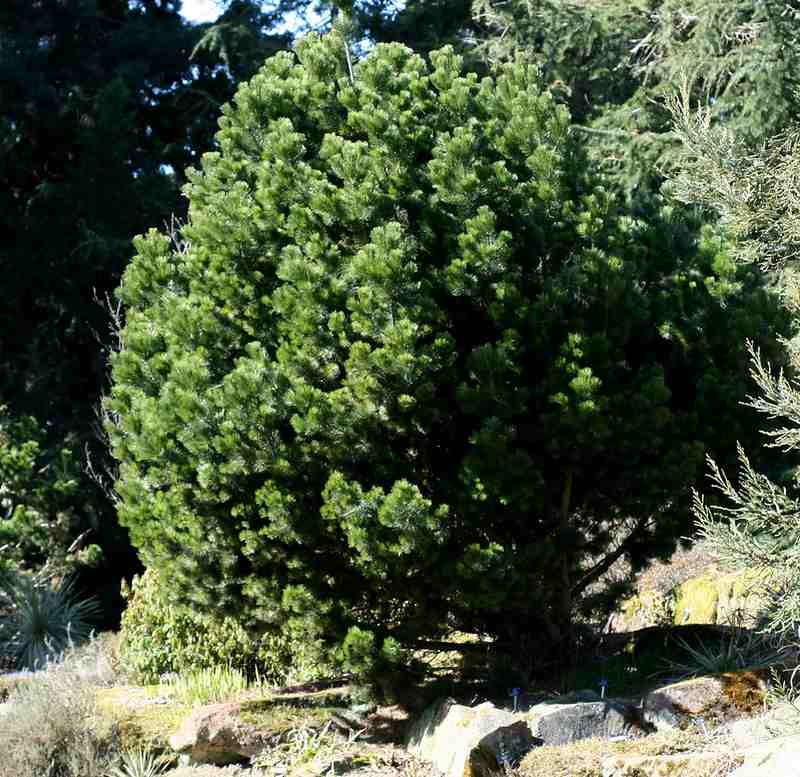
Photo Credit: S. Rae / Flickr / CC BY 2.0
Are you looking for year-round green foliage? Pinyon pine is one of the most drought-tolerant evergreens, making it a great fit for Utah’s arid climate. What’s more, the tree yields delicious and healthy pine nuts that can be consumed raw or toasted.
Remarkably, pinyon pine may live as long as 1,000 years. It’s somewhat oval-shaped when young and becomes more open as it ages. If you want to provide local wildlife with food, you’ll be glad to know that the tree attracts birds and squirrels.
USDA Hardiness Zones: 5 to 8
Growing conditions: Best not to irrigate once established; should get well-drained soil; can grow on dry, poor, or alkaline soils, but not wet soils; drought-tolerant.
Sunlight: Should get at least 6 hours of sunlight per day
Mature size: 25 to 50 feet
Leaf retention: Evergreen
Flowering: No
Potential hazards: None known for humans or pets, but caution is always advised
9. Rose of Sharon (Hibiscus Syriacus)
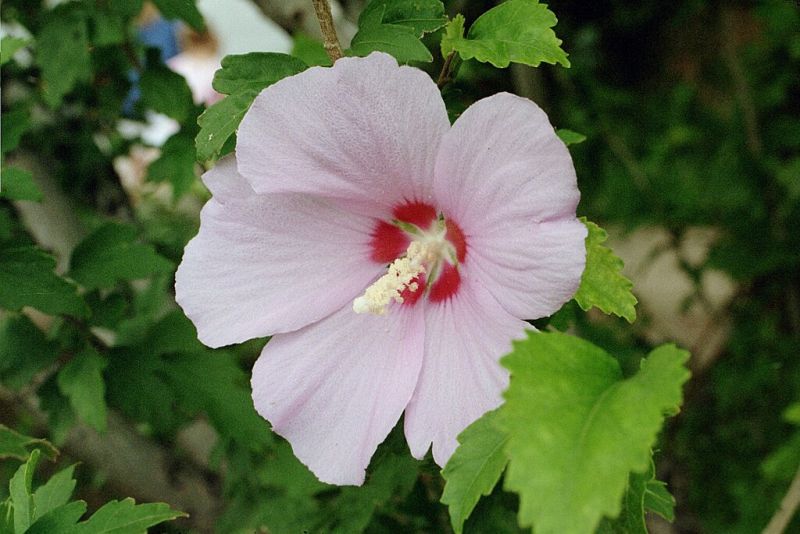
Photo Credit: Eric Kounce TexasRaiser / Wikimedia Commons / CC BY-SA 3.0
Rose of Sharon is a perennial plant that yields beautiful blossoms year after year for 20 to 30 years. The blossoms’ colors include white, blue, lavender, pink, and red, and sometimes they’re even combined. Moreover, rose of Sharon is also drought-tolerant and versatile, making it a great addition to your Utah landscape. It also attracts wildlife like butterflies and hummingbirds.
Take caution, though; this type of hibiscus is reported to be toxic to pets.
USDA Hardiness Zones: 5 to 9
Growing conditions: If in full or partial sun, tolerates various soil temperatures, moisture conditions, and PH, but needs moisture and protection during midday and afternoon sunshine.
Sunlight: Prefers at least 4 hours of sunlight per day; it also needs a little pruning and shaping
Mature size: 8 to 12 feet
Leaf retention: Deciduous
Flowering: Yes
Potential hazards: Toxic
10. Star Magnolia (Magnolia Stellata)
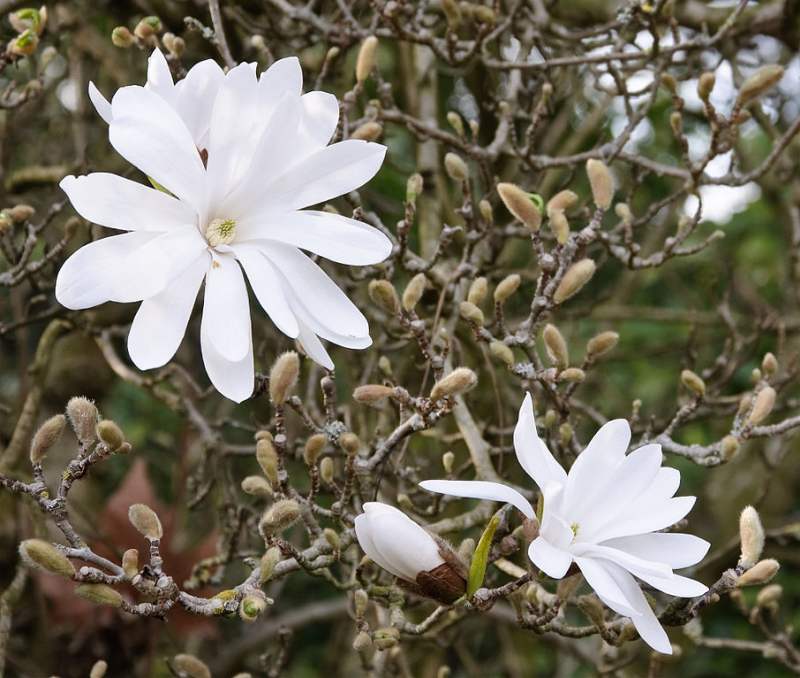
Photo Credit: Photo: Myrabella / Wikimedia Commons / CC BY-SA 3.0
The showy star magnolia’s striking, fragrant blossoms stand out in contrast to its dark green leaves, making it a beautiful addition to any landscape. A healthy star magnolia may live for as long as 120 years. It also provides food and shelter for local wildlife.
The tree is easy to maintain and resistant to Utah’s varying temperatures. Although it’s quite versatile, you’re more likely to enjoy more of star magnolia’s magnificent flowers if you plant it in full sun.
The tree is generally seen as non-toxic, but some sources report that it may have some poison characteristics; caution is always advised.
USDA Hardiness Zones: 4 to 9
Growing conditions: Withstands some flooding and drought; grows in acidic, loamy, moist, sandy, well-drained and clay soils.
Sunlight: Needs full sun and partial shade with at least 4 hours of direct sunlight per day; trees exposed to full sun flower better
Mature size: 15 to 20 feet
Leaf retention: Deciduous
Flowering: Yes
Potential hazards: Most sources report that star magnolia has no toxic effects, but a few sources claim they may have some poison characteristics; caution is always advised
What Makes a Tree Thrive in Utah
Caring for your tree is important to help it thrive in your landscape. As such, you should research the specific needs of your tree, and make sure that you provide it with the right maintenance.
Here are a few tips to make your Utah tree thrive:
- Choose the right tree: This may seem obvious, but it’s a necessary step to ensure your tree thrives in your yard. Make sure that you pick a tree that not only fits the local climate but also your own personal preferences.
- Consider hardiness: Utah has a hardiness zone of 4 to 9, depending on the area. Make sure you check your hardiness zone and only buy trees that will grow in it.
- Test your soil: You can do this by using a soil testing kit or sending a sample to a lab. This will help you determine if any amendments need to be made before planting your tree.
- Check your space: Trees should have sufficient space between them to grow properly. Take your hardscapes and walls into account when planting, too.
- Check the tree’s access to sunlight: Some trees can deal with partial shade, while others need full sun. Wherever you’re planting your tree, make sure that it will receive the right amount of sunlight for its species.
- Keep tree roots healthy with mulch: A healthy mulch level helps retain moisture and regulate soil temperature, while also suppressing weed growth. However, be sure not to over-mulch as this can lead to root rot and other issues.
- Water your trees: Although many of the trees listed in this article are drought-tolerant to some extent, watering your trees is essential for their health and growth. Make sure not to overwater them, though.
- Prune your trees: Pruning your trees is also crucial for their health and growth. Regular pruning helps remove dead or diseased branches, improves air circulation, and encourages new growth. However, make sure to follow proper pruning techniques and avoid over-pruning, which weakens the tree.
Once you’ve planted your tree, make sure you give it regular checkups to ensure its health and growth. Be sure to check all parts of the tree and monitor its annual growth.
FAQ About the Best Trees in Utah
According to Salt Lake City Public Lands Department, new trees typically need to be watered 1 to 2 times per week. In summer, you should increase the frequency to 3 to 4 times per week.
According to the University of Maryland, most trees shouldn’t need fertilizer, especially when they’ve become mature. It’s definitely better to avoid fertilizing at planting time because it can stunt growth. You should also certainly not use fertilizer if the tree has recently suffered root damage.
If you want to plant a fruit tree, the apple tree is among the easiest to grow. It’s relatively low maintenance and a great way to start your fruit tree growing journey.
How You Can Make Tree Care Easier
As we’ve discussed, a lot goes into making sure that your fruit tree thrives, but there are some things you can do to make tree care easier. For example, you can choose a low-maintenance tree species that won’t need as much care and attention as other kinds of trees.
To make it easier to care for your whole yard, consider xeriscaping techniques, hardscapes, and planting low-maintenance grass and plants. If you live in Salt Lake City, be sure to check out our Salt Lake City grasses guide. ****
However, if you’d like some extra help with caring for your Utah yard and trees, be sure to contact one of WikiLawn’s pros in Utah.
Main Photo Credit: Capital of Utah / Raman Patel / Wikimedia Commons / CC BY 3.0